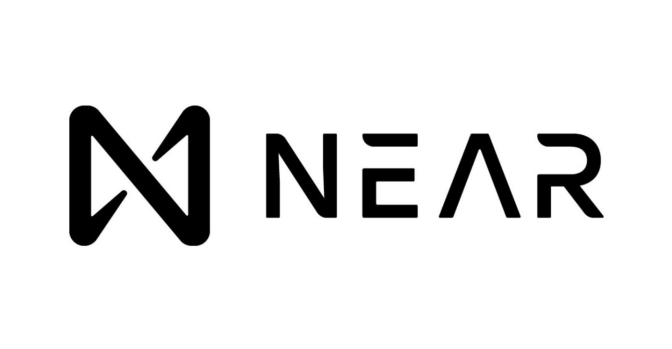
The NEAR protocol is a proof-of-stake (PoS)-based blockchain technology designed to provide greater scalability and usability, positioning itself as a competitor to Ethereum. Its unique Nightshade sharding technology is capable of processing over 100,000 transactions per second (tps), compared to Ethereum’s current processing speed of around 30 tps. The NEAR Protocol strives to prove that decentralized networks can be scalable, secure, and have trustless consensus.
The smart contract revolution
Smart contracts open up a new world of economic applications on blockchain-based platforms. Smart contracts, introduced and popularized by the Ethereum blockchain, have become almost synonymous with blockchain applications, allowing network participants to deploy and run financial application code on decentralized infrastructure. Since Ethereum’s launch in 2015, there has been a steady influx of new smart contract-based platforms, in part due to rising gas fees and congestion on the Ethereum blockchain.
Creation of the NEAR Protocol
The NEAR protocol was founded in 2017 by former Google engineering manager Illia Polosukhin and former Microsoft software developer Alexander Skidanov. Both are part of the Y Combinator startup accelerator program, and their ideas raised $50 million in two private funding deals in just four months.
NEAR’s Aurora Advantage
Because NEAR is built from the ground up, with its own unique sharding technology and Doomslug consensus mechanism, there are interoperability issues, especially with previous applications built on Ethereum. To solve this problem, NEAR uses a subnet called Aurora, which is actually an Ethereum Virtual Machine (EVM) smart contract platform that creates a bridge between Ethereum and NEAR.
Aurora’s transaction fees are approximately one-thousandth of Ethereum’s fees, meaning developers can redeploy their applications on NEAR in minutes without making any major changes.
NEAR protocol bridge
How NEAR’s Rainbow Bridge enables trustless interoperability
Launched in April 2021, Rainbow Bridge is the industry’s first completely trustless Ethereum-to-NEAR bridge. This is a huge deal as it represents a step towards blockchain interoperability. If someone wants to move any Ethereum-based token, such as Tether, onto the NEAR network to pay for usage by applications built on top of it, they can now do so via the Rainbow Bridge.
Near Protocol X Octopus Application Chain Network
Making quite a splash recently is the launch of the Octopus Network, a NEAR-based multi-chain network for launching and running Web 3.0 application-specific blockchains, also known as app chains.
These app chains are independent blockchains for a set of custom-designed applications, providing developers with app chain design optimization options from governance frameworks to economic models. In addition to high levels of customization, developers benefit from low-cost infrastructure for deploying user-friendly applications.
NEAR Token Economic Model
The NEAR token ($NEAR) is the platform’s native currency. NEAR's economy is built around utility tokens, which act as a medium of exchange on the network. NEAR tokens are primarily used by two groups of people - application users who pay to use the DApp, and validators who run nodes to provide computing resources and security.
Because the Near protocol is completely permissionless, anyone can validate transactions on the network to earn transaction fees. In addition to accessing applications on the platform, token holders can participate in network governance and even earn rewards by staking their tokens. Staking is where users lock their tokens in smart contracts to earn interest, and the penalty for validators who engage in malicious network activity is to have their stake slashed.
NEAR Token Price History and Price Prediction
The NEAR token ICO took place on CoinList in August 2020, five months after its launch, and 1 billion NEAR tokens had been created at launch in early April. Roughly 12% of these initial tokens generated $33 million in revenue ahead of the final phase of NEAR’s mainnet launch later in October.
This may be due to Dragonfly Capital’s participation in the NEAR Validator advisory committee. Dragonfly Capital is a blockchain-focused global investment firm active in the U.S. and Asian markets.
The NEAR token traded below $2 for much of the remainder of 2020 before starting to climb higher, reaching a high of $16.27 in late December 2021. Among other things, this surge may be driven by NEAR's $800 million funding package to accelerate growth in October 2021, with $350 million provided by Proximity Labs to build momentum in the NEAR ecosystem in 2021.
Other factors include partnerships with Opera, the Wharton School, and crypto payments provider MoonPay, which makes $NEAR accessible in 150 countries around the world. It also launched Simple Nightshade, which is Phase 0 of its roadmap toward a fully sharded blockchain.
Bullish sentiment persisted, leading $NEAR to hit an all-time high of $20.42 on January 16, 2022. Although its price fell, possibly due to selling by traders and holders, its price action remains bullish. $NEAR surged again in April, going against the broader cryptocurrency market trends at the time. In April, NEAR was up 24.1%, while Bitcoin was down 11.9% and Solana was down 15.9%.
According to data from Defi Llama, $NEAR’s TVL surged to a then-all-time high of $374.14 million on April 13, compared to $136.61 million in December. Year-to-date, TVL is up 174% in April, while $NEAR has seen a more modest price gain of 24.1%.
Other positives are the launch of the NEAR Foundation and the acceleration of NEAR addresses. Overall, the NEAR protocol has great potential for development in the blockchain field and is expected to become one of the leaders in blockchain technology in the future.